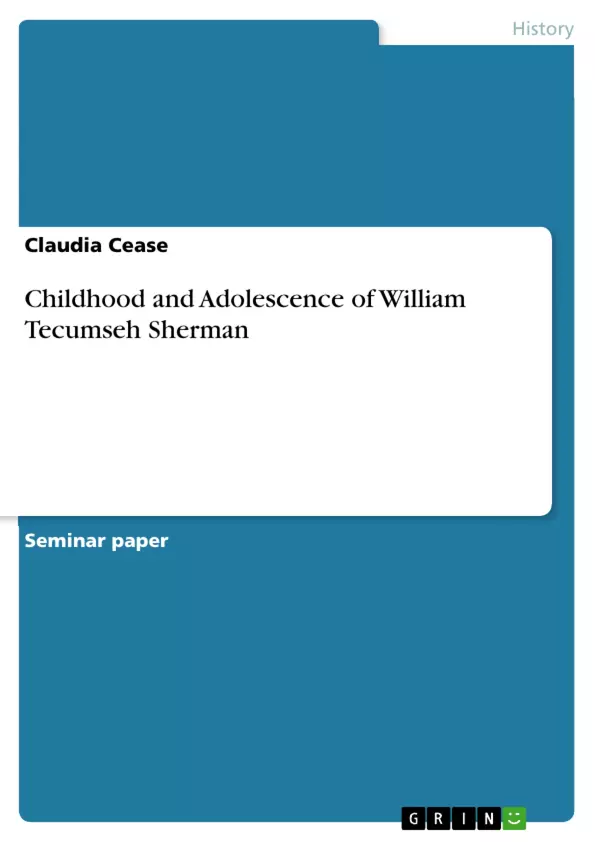Controversial was General William T. Sherman already during his life time. In the North admired and loved, in the South feared and hated, General Sherman sought to end the Civil War fast through the destruction of the support system of the Confederates. He recognized early on that modern warfare had to include the civilian population as his ‘March to the Sea’ showed and in many aspects it was very successful. General Sherman plays an important and outstanding role in the military leadership of the Civil War on both sides. The character-forming years of childhood and adolescence of the “red-haired, impulsive Ohioan named William Tecumseh "Cump" Sherman” gives us a rare glimpse into the very private yet public persona.
Table of Contents
- Childhood and Adolescence of William Tecumseh Sherman
- Family Background and Early Life
- The Influence of the War of 1812
- William's Naming and Early Years
- The Family's Prosperity and Tragedy
- William's Time with the Ewing Family
- Education and Early Work
- Admission to West Point
- William's Experience at West Point
Objectives and Key Themes
This work explores the early life and formative years of General William T. Sherman, focusing on the period from his childhood to his admission to West Point. The text aims to provide insights into the factors that shaped Sherman's character and set the stage for his future military career.- Family Influences and Heritage
- The Impact of the War of 1812
- The Significance of Naming and Identity
- Education and Early Experiences
- The Transition to West Point
Chapter Summaries
- The initial chapter introduces General William T. Sherman and highlights his controversial figure during his lifetime. It also introduces the concept of his early life as a glimpse into his complex persona.
- The second chapter delves into William's family background, tracing his lineage back to England and highlighting the family's involvement in American politics and law.
- The third chapter discusses the influence of the War of 1812 on the Sherman family and the broader context of American expansion westward. It introduces the figure of Tecumseh and his impact on American history.
- The fourth chapter explores the naming of William Tecumseh Sherman, highlighting the significance of the name and its connection to military discipline and warfare.
- The fifth chapter details the Sherman family's prosperity and subsequent tragedy, including the death of William's father and the family's subsequent separation.
- The sixth chapter focuses on William's time spent with the Ewing family, highlighting the impact of this experience on his development and education.
- The seventh chapter explores William's early education and work experiences, emphasizing his academic performance and his first foray into earning his own money.
- The eighth chapter details William's admission to West Point, describing his preparation for the academy and his first encounter with President Jackson.
- The final chapter summarizes William's experience at West Point, providing insights into his academic performance and his adaptation to the military environment.
Keywords
This work primarily focuses on the early life of General William T. Sherman, exploring key themes such as family history, the influence of the War of 1812, the significance of naming and identity, education, and the transition to West Point. The text highlights the impact of significant figures like Tecumseh and President Jackson on Sherman's formative years.- Quote paper
- Claudia Cease (Author), 2012, Childhood and Adolescence of William Tecumseh Sherman, Munich, GRIN Verlag, https://www.grin.com/document/263605



